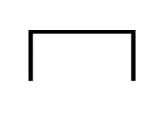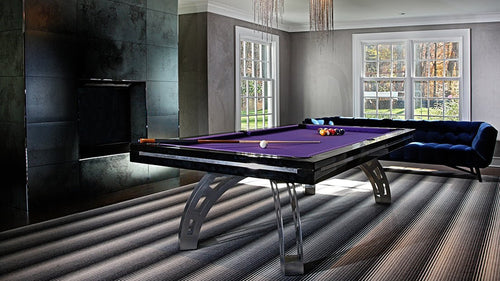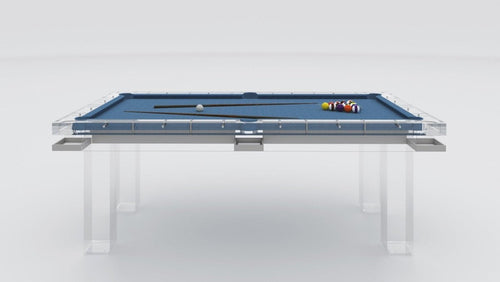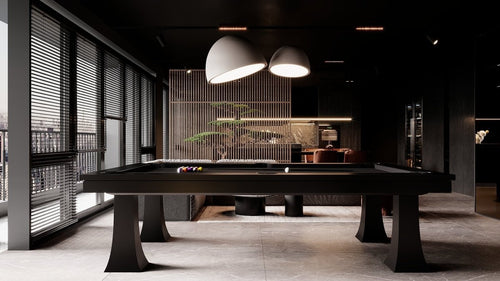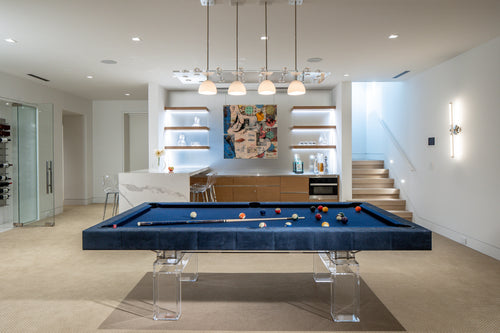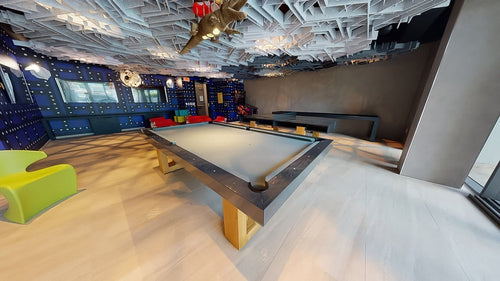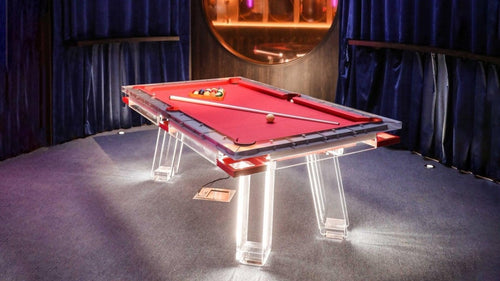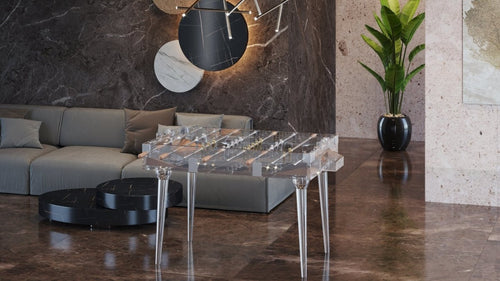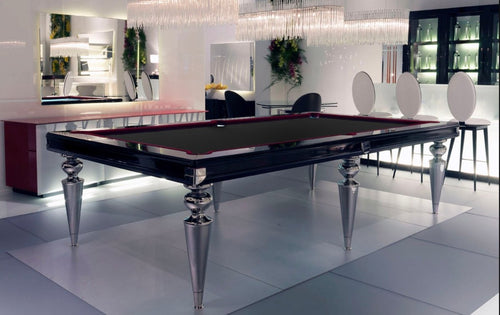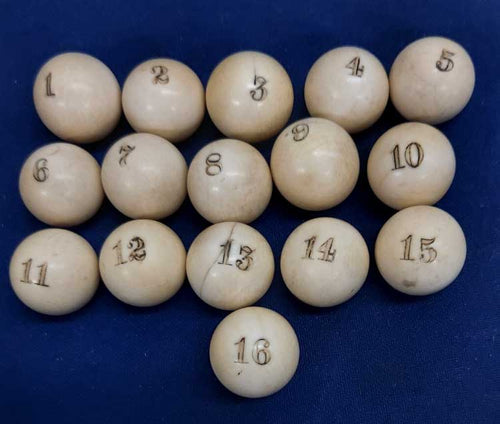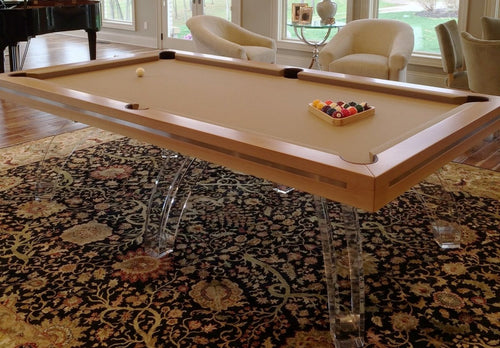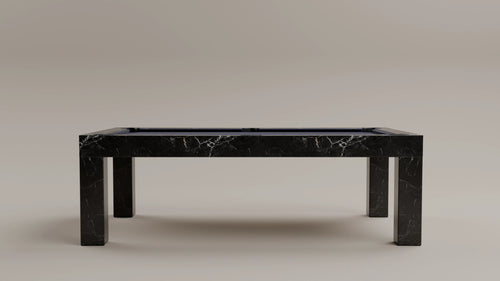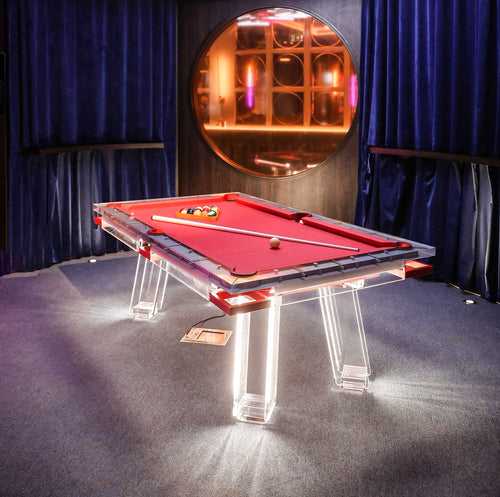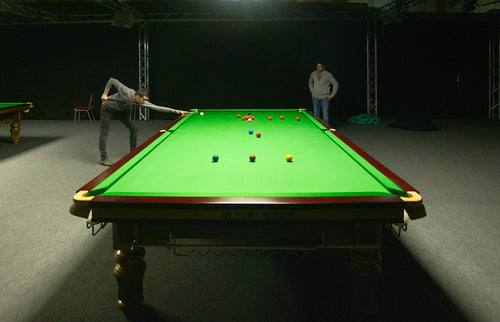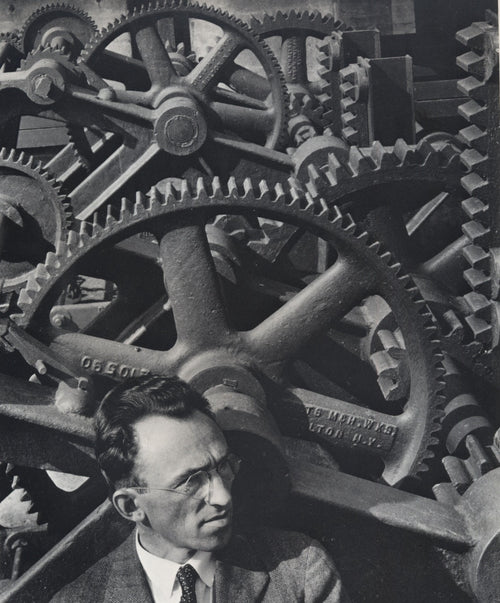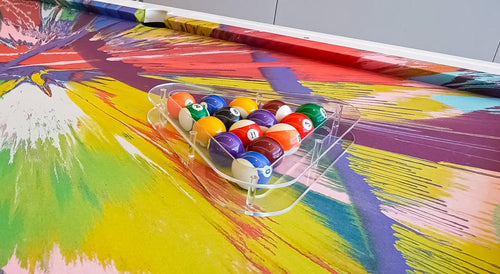Enjoy our modern designs
When it comes to maintaining a smooth and consistent playing surface on your pool table, the cloth (also known as felt) plays a crucial role. A loosely installed cloth can significantly slow down or reduce the responsiveness of your table, making proper installation crucial for optimal play. But how can you tell if this is the case? Maintaining a tightly stretched pool table cloth is essential for ensuring smooth, consistent gameplay and accurate ball response. In this guide, we’ll discuss the common signs and how to test for a loose pool table cloth based on insights from experienced players and technicians.
The Palm Test: A Simple Way to Detect Loose Cloth
One of the simplest methods to check if your pool table cloth is too loose is the palm test. Spread your fingers, press your palm firmly against the cloth, and push it sideways with slight pressure.
In dry conditions, a properly stretched cloth should hardly move. However, if the cloth shifts or creates “waves” under your hand, it’s likely too loose. This test can quickly indicate if there’s an issue, especially if you feel movement similar to pushing on a soft, unstretched fabric.
A professional technician mentioned that humidity can temporarily stretch the cloth by causing it to absorb moisture. This can lead to slower play and inconsistent ball movement, as the cloth becomes looser and less responsive. To mitigate these effects, consider using a dehumidifier or adjusting room conditions to control humidity levels. Once it dries out, it might tighten back up, but if the problem persists, a re-stretch or replacement may be required.
Bridge Hand Test: Evaluating Cushion Response

You can also detect a loose cloth by placing your bridge hand on the table and feeling for any softness or shifting. If the cloth feels soft or shifts slightly, it could indicate the cloth wasn’t stretched tightly during installation. In some cases, a loose cloth can even cause balls to slide rather than rebound correctly from the cushions, which may result in slower play.
A properly installed cloth should allow the cue ball to rebound consistently off the rails, ensuring smooth and predictable play. If the cloth is not properly installed, you may notice balls rebounding at odd angles, losing speed prematurely, or not following their expected path. An expert technician explained that you can test this by hitting shots off the cushions and observing whether the balls react sluggishly or don’t rebound as expected. If the cushion response feels off, it might not be the cushions themselves—it could be the loose cloth.
The Lag Test: Measuring Cloth Speed for Accuracy

To get a more accurate measure of whether your cloth is too loose, you can perform a lag test. This involves shooting a good lag shot and timing how long the cue ball takes to travel across the table and come to a stop.
Use a stopwatch to measure the time it takes for the cue ball to stop after rebounding off the far cushion. Be sure to keep the shot force consistent to ensure accuracy in your timing. Then, square the time and multiply it by two. This calculation gives you the relative speed of your cloth. A lower speed score indicates that the cloth is loose and may cause slower, less predictable gameplay, while a higher score suggests that the cloth is tightly installed and provides a faster, more consistent playing experience.
Example: If the ball takes 7.1 seconds to finish its lag, square that (7.1 * 7.1 = 50.41) and then multiply by two. This gives you a score of approximately 100, which is a good speed. If your cloth is too loose, the speed will likely be much lower, indicating a need for adjustment.
A billiard expert shared that this method is especially helpful for identifying slower cloth speeds caused by improper stretching.
Visual Signs of Loose Cloth

Aside from tests, you can often tell if your pool table cloth hasn’t been pulled tightly enough just by looking at it. Keep an eye out for wrinkles, ripples, or bunching—particularly around the rails or pockets.
If the cloth moves or shifts with just a light press, or if you notice that the balls slow down more than usual, the cloth is likely too loose. Loose cloth can create inconsistencies in ball movement and slow the pace of the game significantly.
Installation Problems: The Impact of Short Cloth

Sometimes, the problem isn’t that the cloth wasn’t stretched properly, but rather that the cloth itself was too short for the table. A client reported that their installer had trouble stretching the cloth over the table because it was too short. To avoid such issues, ensure correct measurements are taken before installation to guarantee the cloth fits the table properly. This led to a slow-playing table due to insufficient stretching.
If you suspect your cloth is too short, you may need to replace it with the correct size or have a professional mechanic reinstall it. For example, if your table is a 7-foot table, make sure you’re using cloth that fits those dimensions accurately. This ensures there’s enough material to stretch properly, avoiding loose or slow cloth.
Checking the Cushions

It’s important to remember that sometimes, what seems like a loose cloth issue can actually be related to the table’s cushions. If the cushions are worn out, damaged, or improperly installed, they can affect the table’s overall responsiveness. However, if the cloth feels loose and the cushions aren’t at fault, the cloth likely needs to be re-stretched or replaced. A replacement may be necessary if the cloth is too worn or damaged, such as having visible tears, excessive pilling, or fraying, while a re-stretch is often sufficient if the cloth is still in good condition but just improperly installed.
A technician recommended checking how the balls react off the rails. If the ball rebounds inconsistently or too slowly, it’s time to inspect both the cushions and the cloth.
Ensuring a Tight, Responsive Cloth
A properly pulled, tightly stretched cloth is essential for maintaining a responsive and consistent playing experience on your pool table. Simple tests like the palm test and lag shot can help you diagnose if your cloth is too loose. If you find issues, a re-stretch or a replacement may be necessary.
In addition, always ensure that your pool table is installed by a knowledgeable mechanic who understands the importance of cloth tension and cushion performance.
If you have any questions about your pool table cloth or need professional help with a re-stretch or cloth replacement, feel free to reach out at sales@pooltableportfolio.com or call us at 888.617.7665. We’re here to help ensure your table plays at its best.

